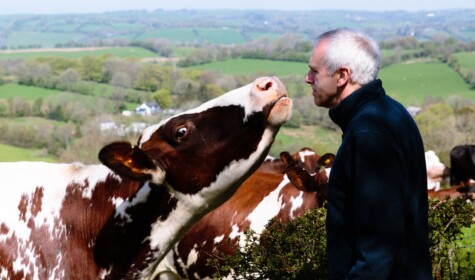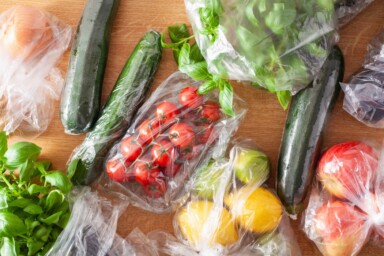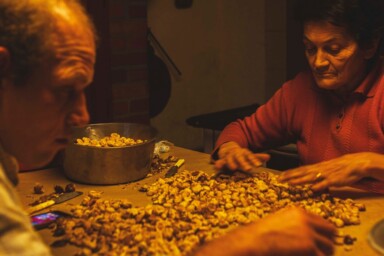For me, the run up to Easter is a very emotional time for reasons I don’t fully understand. This year, I am unsettled by the turbulent conditions on planet Earth, my personal vulnerability and observations about the fragility of the human race.
All this co-exists with the unfolding miracle of spring and evokes inner questions: Why am I here? What is the higher purpose of life on Earth? How can I respond to external events and play my part in serving the common good, realising at the same time that I am not in control of the situation nor ever can be?
Of course, I don’t have answers to these questions, but I have found that if I try to reserve some time each day for a period of quiet mindfulness or meditation, this seems to greatly increase the opportunity for ‘right action’ – whatever that actually means!
In my external life there is much to ‘do’. Last week I was on BBC Radio 4’s Farming Today programme, making the case for a return to the post-Brexit agricultural policy review, including the two key policy instruments, the Agriculture Bill and the Environmental Land Management scheme (ELMS).
I made the point that when this pandemic, which has precipitated a food security emergency not seen since the Second World War, is over, surely society will demand a rethink of our future strategy so that the capacity of UK farmers to produce enough sustainable and healthy food from our own resources is enhanced and supported.
On Friday, I participated in a conference of farming leaders convened by Minette Batters, head of the NFU. During the conference call there was a discussion about what the government should do in response to the desperate situation facing some dairy farmers, particularly those who were supplying food service outlets and whose milk is now surplus to requirements.
My contribution to the discussion was to suggest that we sign a joint media statement, explaining the plight of those parts of the farming community who no longer have a market for their products, and suggesting appropriate action from the millions of citizens who want to do the right thing, urging them to use their purchasing power to improve the fortunes of the food producers who are suffering most at the present time.
It remains to be seen how many of the farming organisations represented on the call will decide to sign up to such a ‘Dunkirk spirit’ call for support, or the level of public response, but somehow I feel optimistic.
After the call, I had a ‘Zoom‘ discussion with Will Harris, one of the leading regenerative farmers in the US, whose holding I was scheduled to visit later this month – that obviously won’t happen now! I was anticipating a 30-minute discussion, but the call went on for over an hour, due largely to the fascinating story that Will told about his sixth generation, 3,200 acre family farm in Bluffton, Georgia. It’s now carbon negative as a result of his adoption of regenerative farming practices in the 1990s. He explained that he had farmed intensively for the first 20 years of his career before deciding to switch, so I asked him what were the influences and motives which caused him to change. Surprisingly, to me at least, he said that there were no significant influences from other farmers, nor was his motivation financial. Instead, he described his motives as being entirely related to his observations on the negative impact of his farming practices on a combination of his soils, his farm environment, the landscape and the cultural and social impact of industrial farming on his local community. He believes that the risk-reward benefit of advantage still lies with the intensive farming community, since although their systems may not necessarily be more profitable, they are much less complex to manage.
Will is one of the relatively few farmers that have participated in a scientific evaluation of the impact of his farming system, the data from which indicates that his farming system is net carbon negative – it is actually taking CO2 out of the atmosphere.
I asked him whether he thought that if this evidence was more widely available, it would trigger the US administration – or governments in general – to introduce policy incentives to improve the economic climate for regenerative agriculture?
His response was dismissive – he felt that in the US, the strength of the vested interests promoting industrial agriculture were so great that it would be highly unlikely for governments to intervene any time soon. Instead, he suggested that the power of the market and informed citizens acting in their role of consumers was a much stronger driver in increasing the scale of adoption of regenerative farming systems. He did qualify this statement, suggesting that the number of citizens who would be willing to pay significant premiums for better food was limited. This led me to ask the crunch question (as I saw it) ‘Would he agree that unless regenerative farming practices are taken to scale in the not too distant future, we will be likely to end up with an unliveable planet?’, to which his answer was ‘yes’.
On the face of it, this seems quite a depressing ending to a 90-minute discussion (which will be posted on the SFT website in two halves), but the overall impact was the opposite – I was inspired! Somehow just knowing of the existence of farmers like Will Harris makes me feel more cheerful.
As with the external world, nothing stays the same at Holden Farm Dairy either! Although it’s too early to say with certainty, our decision to shift away from twice to once a day milking seems to have gone down well with the cows. They appear to be calmer and definitely not unduly upset about missing a milking, although for the first couple of afternoons they were clearly a little confused. Our new timetable is that we milk at 5.30am, after which they lie down for a bit or eat a bit of silage before going out to grass for the rest of the day. They’re still in at night, from about 6pm until after morning milking.
Yield has declined by about 25%, but both butterfat and protein levels are up, not enough to compensate for the reduction in yield, of course, but this is nevertheless significant. Plus we save the labour, electricity and wear and tear costs of two milkings a day.
Overall, it feels very different to know that once the morning milking is over, there’s not another one looming, and it gives much more time either to attend to other jobs on the farm or even – chance would be a fine thing right now – relax and enjoy the incredible beauty of our farm in the springtime.
On the dairy front, the government’s new requirement for workers to obey the 2 metre rule, has forced us to give up cheesemaking, at least for the time being, which means that we’ve now had to furlough three out of four members of the cheesemaking team. Orders are still way down, although there are just the smallest indicators that our online and direct sales business will at least partly compensate for some of the trade that we’ve lost.
On the land, we’ve drilled our oats and peas (see our Instagram, ‘Hafod Cheese’ for filmed evidence) and we are currently laying around a quarter of a mile of hard tracks, which will extend the dairy herd’s access to grazing pastures during the season. The material for these tracks is a shaley rock which we are lucky enough to be able to harvest from our hill, since that is the underlying rock.
The remarkable thing about farming in this coronavirus climate is that neither nature nor our animals have the faintest clue that anything is amiss, in fact rather the reverse – the quietness of the skies above our West Wales hill (which are normally ribboned with air trails from trans-Atlantic flights), the abundance of bird song, the resilience of great nature and the complete harmony of it all is a daily revelation, at least when my quality of attention is good enough to take it all in.
I wish all our SFT newsletter readers and supporters a very happy Easter.







